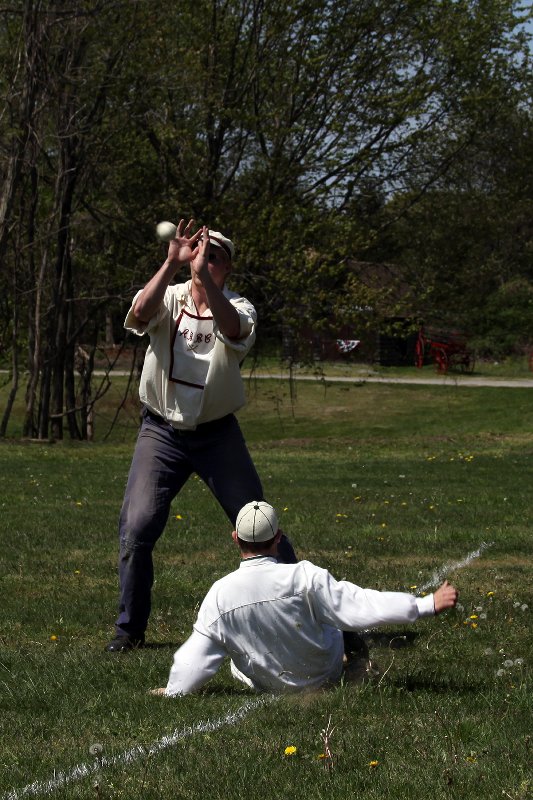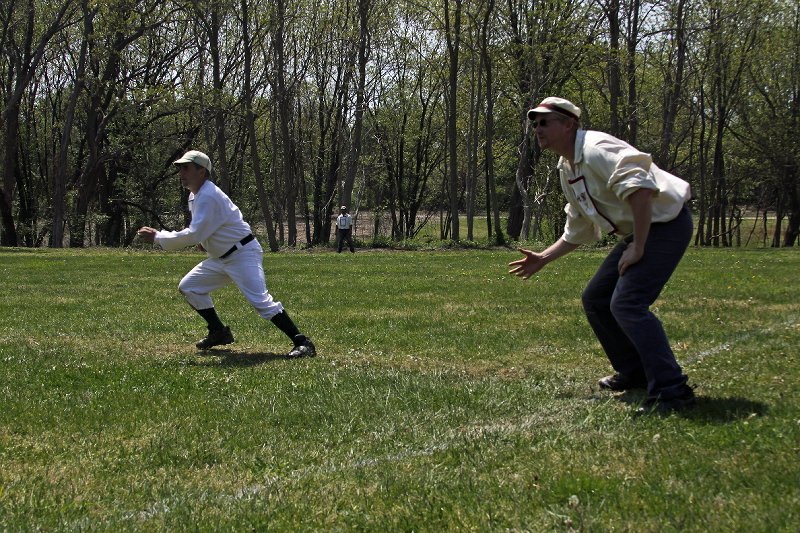|
A Summary of 1864 Rules
View the complete rules adopted by the National Association of Base-Ball Players in Dec 1863
- The ball is slightly larger than a modern base ball. The center is made of rubber. It is hand-made.
- Bats are made of wood, and may be of any length.
- The bases are 90 feet apart.
- Home base is a flat circular white plate.
- The pitching distance is 45 feet, marked by two 12 foot lines, 3 feet apart, which the pitcher must stay between while delivering the ball.
- Pitching is underhand.
- All runners advance on a baulk.
- Three balls constitute a walk. Balls are called after a warning is given to the pitcher for not delivering fair balls. All runners advance one base on a walk.
- Three strikes constitute an out. Strikes are called on good pitches after a warning is given to the striker.
- A foul ball is not counted as a strike.
- Not all pitches need be called.
- The striker must stand on a 6 foot line drawn through the center of the home base.
- A fair or foul ball is determined by where the ball first touches the ground.
- The striker is out if the ball is caught on the fly or on the first bound. Runners may run at their own risk on a bound catch, but must tag up on a fly catch.
|
|
 |
 | | Photos by Brian Sullivan |
|
- A foul ball is considered a dead ball until it is returned in the hands of the pitcher. Runners must return to their bases on a foul ball, and may be put out, as in a force.
- The striker is not permitted to overrun first base, as he risks being put out.
- Each inning after the first, the striker following the player who made the last out will strike first.
- Bunting is permitted.
- Leading off bases is permitted.
- Stealing bases is permitted.
- Sliding is permitted.
- There is no infield fly rule.
- Choice of innings shall be determined by captains.
- There are no time-outs permitted between pitches.
- The striker is not awarded a base if hit by the pitch.
- If a pitched ball, not swung at, hits the bat, it is a dead ball.
- A runner hit by a batted ball is not out, unless the umpire deems it intentional.
- Possession of the ball after a catch, or after a tag, is not necessary.
| Rules Compilation by Ed Elmore and Jim Dragonetti |
|
|



